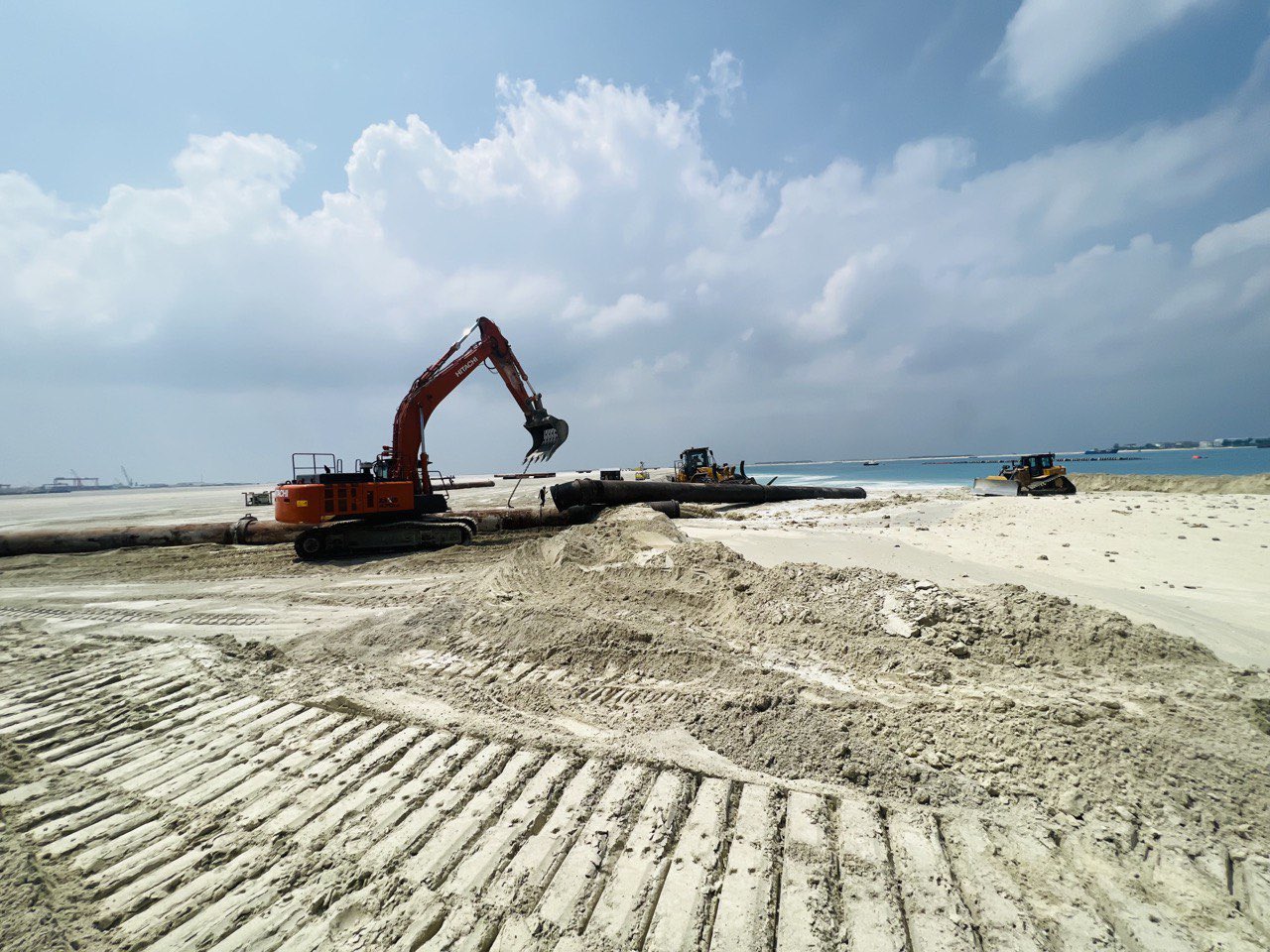Excerpt:
Reclaiming land, but losing paradise?
Just imagine waking up one day to find the sea that was once at your doorstep replaced by a fake 130-meter beach. This is the new reality for the residents of Addu, the southernmost atoll of the Maldives. But this shocking transformation isn’t new — it’s a desperate move to keep the country above water and thriving.
The government has been sucking up sand, coral, and debris from the ocean floor to create new land. If they don’t, this archipelago of islands could be completely underwater by 2100: 80% of the country is less than 1 meter above sea level, making it one of the countries most at risk from rising seas.
However, this drastic measure has backfired. The once attractive “sun, sand, and sea” combination that lured tourists to Addu has been devoured by a human-engineered desert that has pushed the ocean beyond the easy reach of most visitors.
And this controversial initiative could have wider and deeper consequences by destroying coral reefs and seagrass meadows and, ironically, making the Maldives even more susceptible to rising seas.
Land reclamation projects have shaped major cities globally, from Singapore to London, New York, and Miami. Shanghai alone has added land three times the size of Paris. A study confirms that 75% of large coastal cities have reclaimed land, adding an area of 2,530 square kilometers (the size of Luxembourg) to our planet’s coastal surface in this century.
The Maldives are an 820-kilometre string of 1,200 islands in the Indian Ocean. Despite a total territory of 90,000 km2, over 99% is ocean. The islands are primarily coral atolls surrounding lagoons, which means land is scarce. So land scarcity is a key factor driving reclamation projects.
As of 2018, roughly 50 islands had reclaimed land, although many specialists say that’s a conservative estimate…
Home to over half a million people and with an area of just 300 km2, the Maldives ranks as the 8th most densely populated country worldwide. On top of this, it welcomes 1.3 million tourists annually, accounting for 80% of its GDP. The capital, Malé, is a congestion nightmare. Its 8.3 km2 cram in some 157,000 people, or 19,000 people per km2. Yet if you can dodge all its citizens, the entire island can be crossed in a 20-minute sprint.
To alleviate this, the government started reclaiming the nearby atoll, Hulhumalé, in the late 1990s. This ‘city of hope’ was designed with sea-level rise scenarios until 2100, with edges 2 meters above sea level — double that of Malé…
The reclamation process involves vacuuming sand and coral debris from the ocean floor and depositing it to create new land. Sometimes, entire lagoons are filled.
In December 2023, The Maldives’ President, Mohamed Muizzu, launched the Ras Male project to reclaim 1,150 hectares of land, three times the size of Hulhumalé. “This will be a doorstep, a job destination, and an income-generating destination,” he said…









